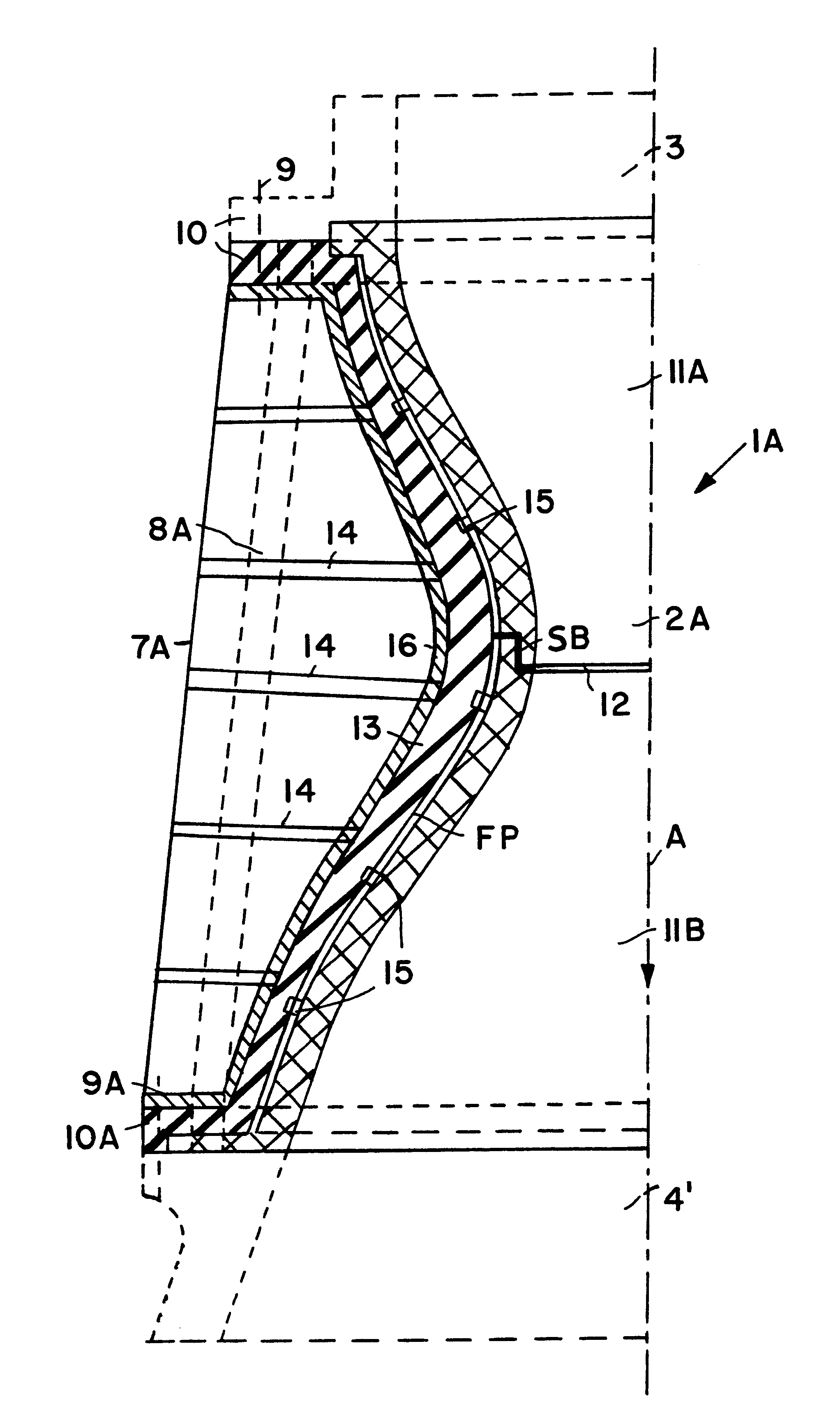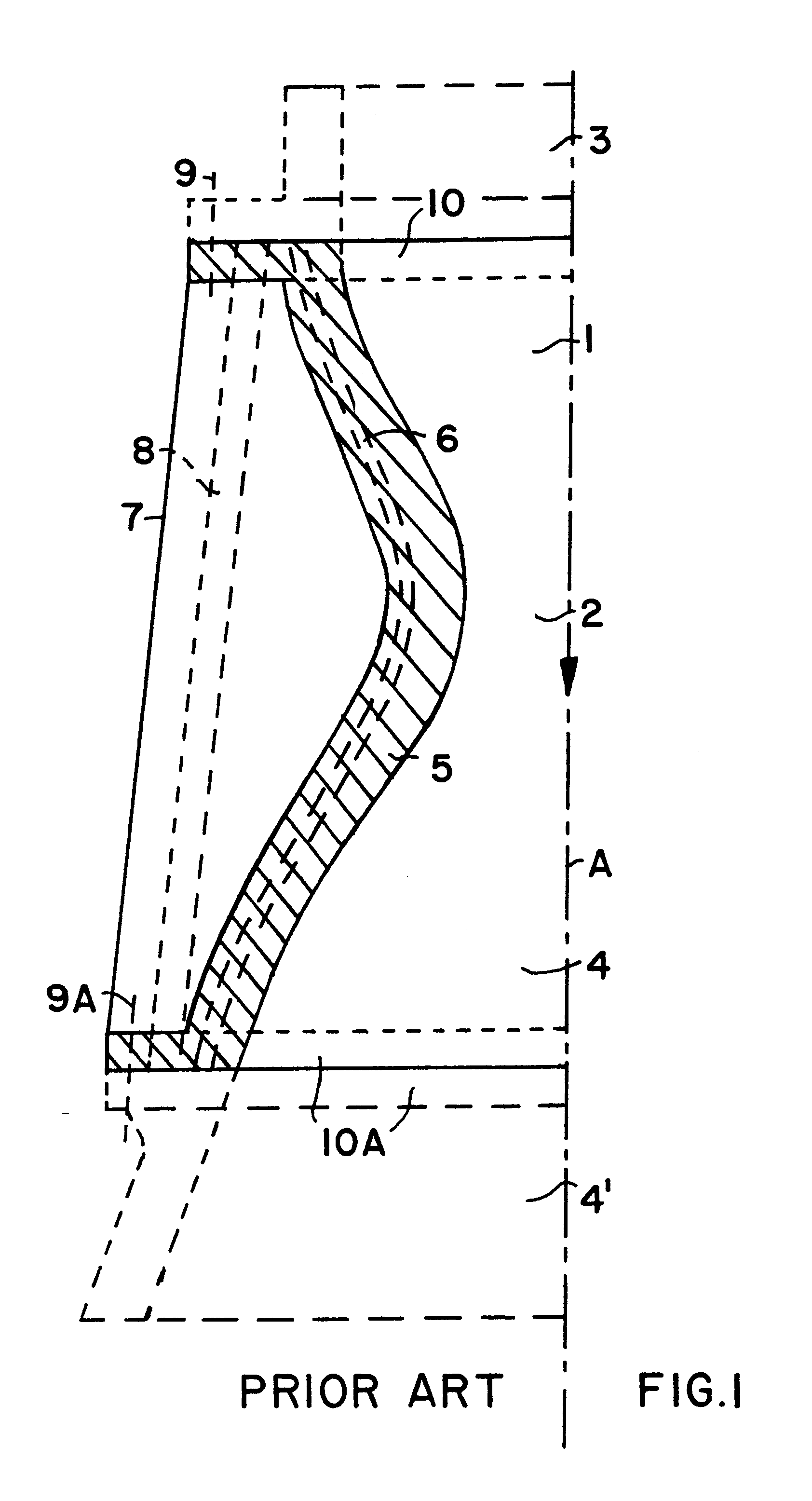Jet propulsion power unit with non-metal components
a technology of jet propulsion and components, applied in the direction of rocket engine plants, machines/engines, light and heating apparatus, etc., can solve the problems of reducing the strength of the engine at temperatures of about 800.degree. c, affecting affecting the operation of the engine. , to achieve the effect of improving the stability of the engine, reducing the weight of the engine, and excellent strength characteristics
- Summary
- Abstract
- Description
- Claims
- Application Information
AI Technical Summary
Benefits of technology
Problems solved by technology
Method used
Image
Examples
first embodiment
FIG. 2 shows schematically a rocket engine body 1A made according to the invention of carbon fiber reinforced silicon carbide composite (C / SiC). The body 1A surrounds with its body sections a central longitudinal directional axis A. These sections include a combustion chamber 11A, followed by a nozzle 2A, followed in turn by an expansion chamber 11B. A single piece of C / SiC composite material forms the combustion chamber 11A and the nozzle 2A. A further single piece of C / SiC composite material forms the body section surrounding the expansion chamber 11B. These body sections are bonded to each other by a silicon layer 12 forming a siliconized bond SB. The bonding between the sections, must be formed in such a way that gases under high pressure and under high temperature operating conditions cannot permeate through the siliconized bond SB to a metallic support structure 7A having a cooling channel 8A. For this purpose the interface between the sections are formed with an axial end or ...
second embodiment
FIG. 3 shows the invention. A monolithic rocket engine body 1B of carbon fiber reinforced silicon carbide composite material encloses a combustion chamber 11A, a nozzle 2A, and a combustion gas expansion chamber 11B.
The monolithic rocket engine body 1B comprises cooling channels 18 which follow the contour of the radially inwardly facing surface of the body 1B. The cooling channels are connected to the cooling systems of the fuel injection head 3 and of the combustion gas expansion chamber extension 4'. These cooling systems are not shown since they are conventional.
The monolithic rocket engine body lB has an integral insulation section 17 that may also be provided with cooling channels 18A connected to cooling channels 18 and the above mentioned conventional cooling systems of the head 3 and extension 4'. The porosity of the monolithic body 1B of C / SiC composite material may diminish radially outwardly from the wall toward a metal support structure constructed in FIG. 3 to have at ...
PUM
| Property | Measurement | Unit |
|---|---|---|
| Fraction | aaaaa | aaaaa |
| Linear density | aaaaa | aaaaa |
| Linear density | aaaaa | aaaaa |
Abstract
Description
Claims
Application Information
 Login to View More
Login to View More - R&D
- Intellectual Property
- Life Sciences
- Materials
- Tech Scout
- Unparalleled Data Quality
- Higher Quality Content
- 60% Fewer Hallucinations
Browse by: Latest US Patents, China's latest patents, Technical Efficacy Thesaurus, Application Domain, Technology Topic, Popular Technical Reports.
© 2025 PatSnap. All rights reserved.Legal|Privacy policy|Modern Slavery Act Transparency Statement|Sitemap|About US| Contact US: help@patsnap.com



